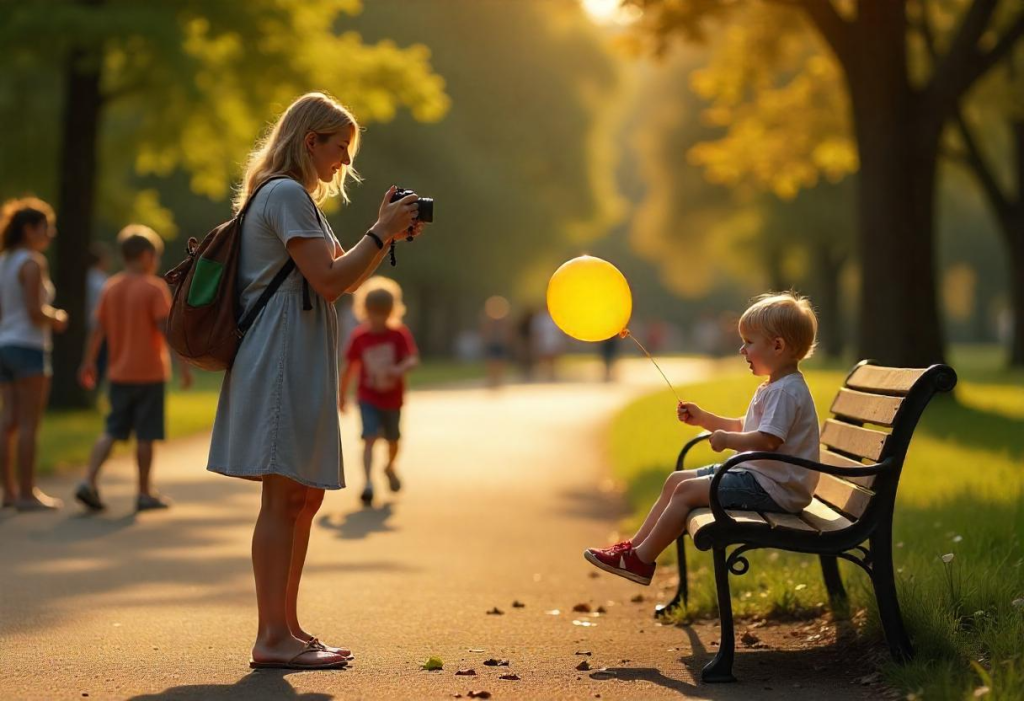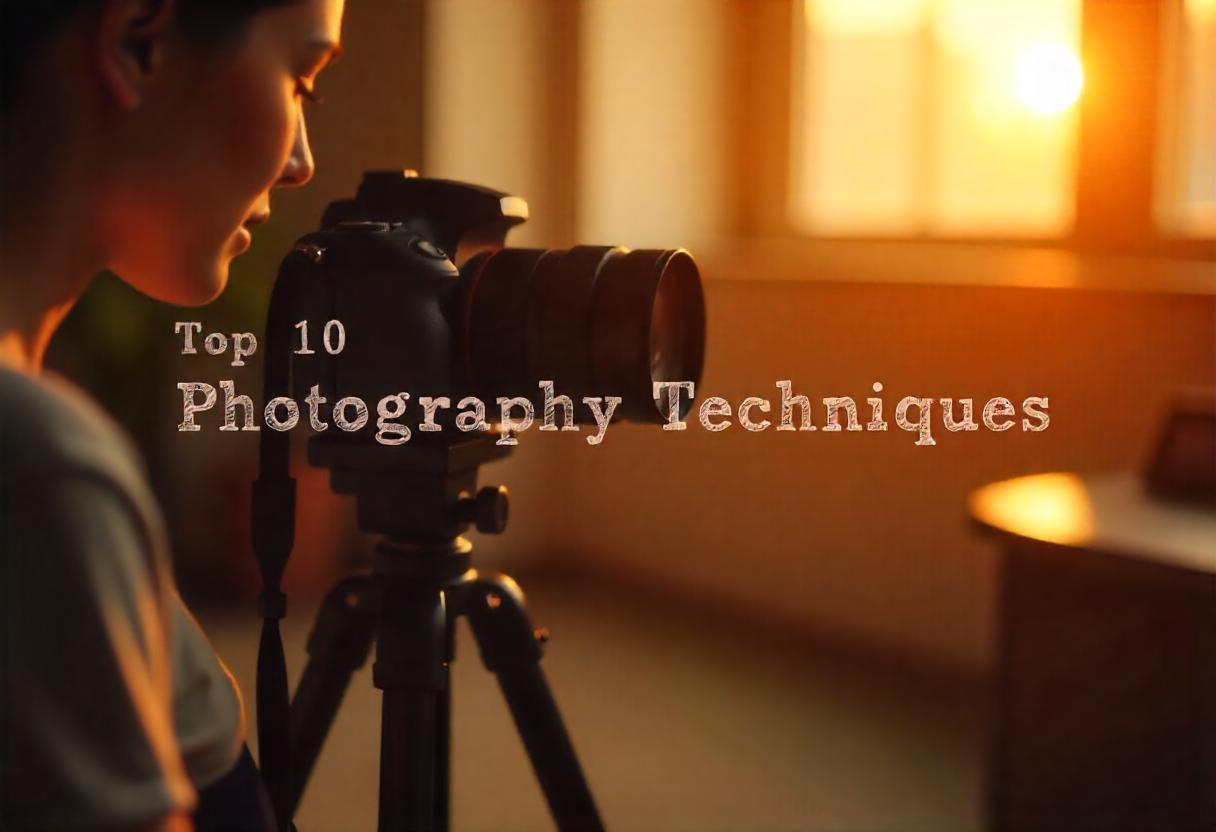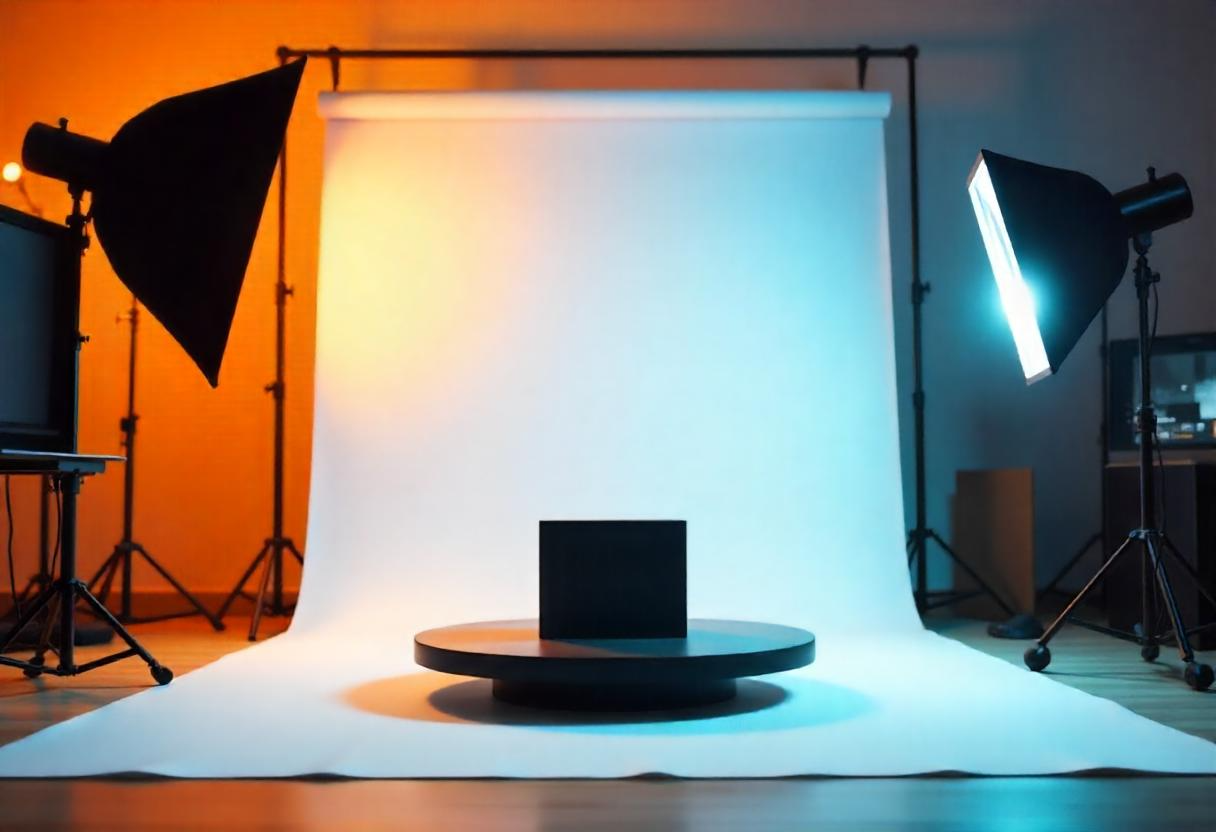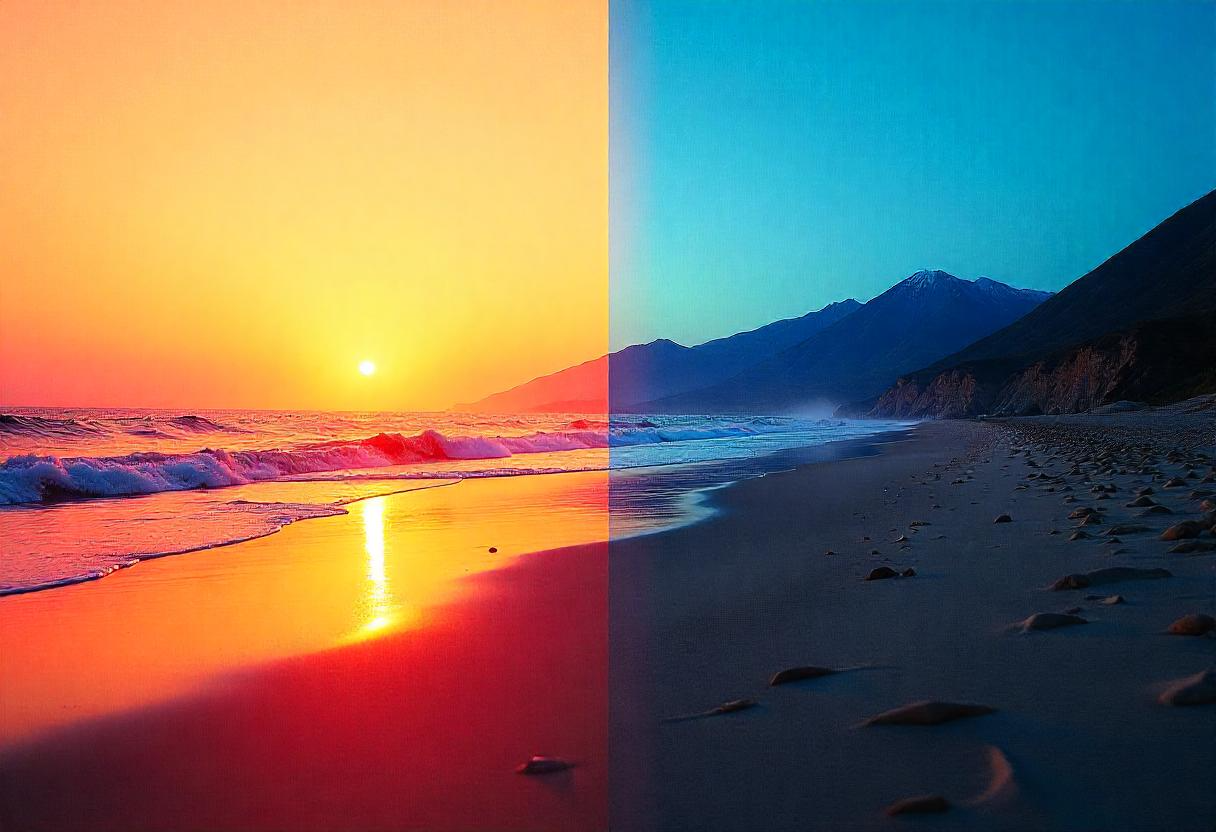Street Photography 101: Gear, Settings & Legal Tips You Need to Know
Street photography is a niche that provides a glimpse of routine life through candid and spontaneous shots.
This article will explain the details of the craft and help you master street photography through basic guides on gear and settings, and must-know legal tips.
What is Street Photography – A Beginner’s Guide?
Street photography is a specific style of photography that focuses on taking candid shots, capturing the true essence of a moment frozen in time.
These shots are unplanned and showcase people just being themselves in urban spaces, creating a ‘slice-of-life’ moment. They are spontaneous and aim to tell a story through each click, emphasizing how every lived experience has a beautiful tale within.
Best Street Photography Gear for Beginners
Cameras
Do you want free career counseling?
Ignite Your Ambitions- Seize the Opportunity for a Free Career Counseling Session.
- 30+ Years in Education
- 250+ Faculties
- 30K+ Alumni Network
- 10th in World Ranking
- 1000+ Celebrity
- 120+ Countries Students Enrolled
Street photographers need to carry their cameras around and capture moments on the go.
The cameras used by street photographers need some distinct qualities so that they suit the purpose and allow hassle-free movements.
Here are some features you need to look for –
Book Now →
- Lightweight and portable
- Easy-to-control and user-friendly settings
- A lens with a large aperture
- Powerful autofocus
Lenses
Selecting the right lens can be a total game-changer. You can elevate your photos, experiment more with them, and add a professional appeal.
Based on your street photography style, there are different lenses that you can choose from.
- Telephoto Lens – With a focal length of 80mm or above and a narrow field of depth, these lenses allow photographers to capture distant objects while adding depth to the composition.
- Zoom Lens – These are lenses with adjustable focal length where you can zoom in and out as per the requirement, capturing distant subjects, or adding motion blur effects.
- Wide Angle Lens – These lenses have a wider field of view and a focal length of 35mm or less, making them perfect for capturing more in a single frame.
- Standard Lens – These are 35 mm- 50 mm lenses with a field of view similar to the human eye. It helps capture just enough background elements to make the composition appear complete.
Equipment Bag
Although a lot of photographers like to keep it light, carrying an equipment bag can be quite helpful.
Do you want free career counseling?
Ignite Your Ambitions- Seize the Opportunity for a Free Career Counseling Session.You can take a backpack that allows you to move freely and keep all the equipment in designated compartments, or use a shoulder bag that is discreet and easy to access.
Make sure your equipment bag is lightweight, easy to carry, has a protective layer to prevent your gear from damage, and is water repellent so you can take street photos no matter the weather.
Tripods
Tripod is an essential gear that allows photographers to stabilize their cameras, minimizing the chances of shaky and blurred images. It is particularly useful in low-light situations and with slower shutter speeds.
You can carry a lightweight tripod around to refine your motion-blur photos, ensure a more precise focus, and take sharp and hands-free photos.
Memory Card and Batteries
Street photography is an art form that requires time and patience. You might have to spend a considerable amount of time finding the perfect subject, exploring suitable angles, and taking a meaningful and artistic shot.
Carrying extra memory cards and batteries will allow you to fully concentrate on your craft without worrying about running out of charge or space.
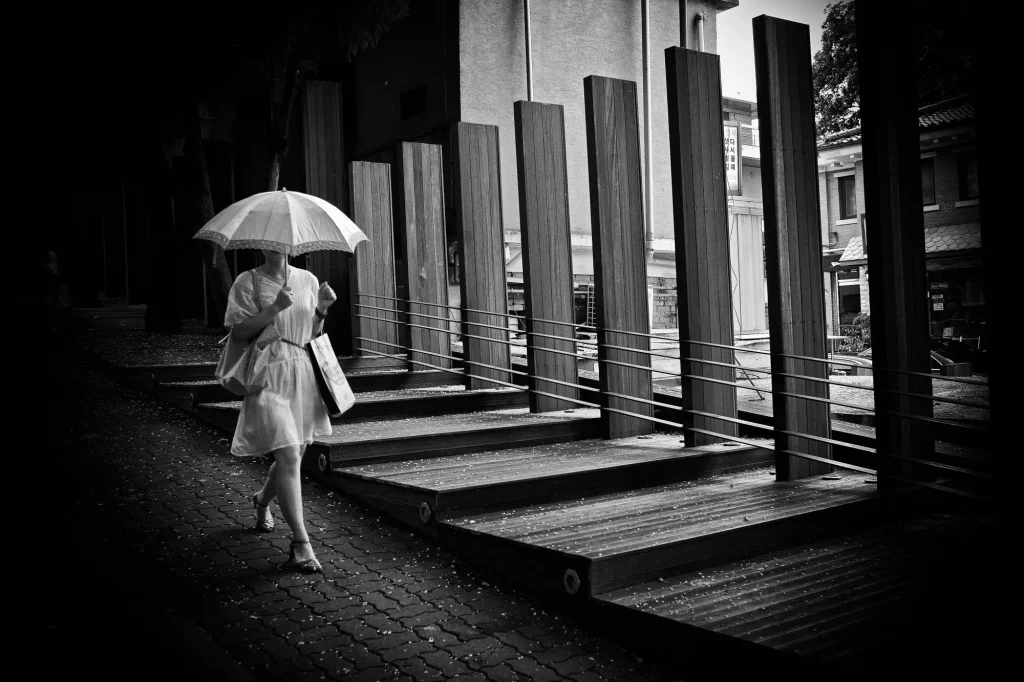
Street Photography Camera Settings You Must Know
- ISO – Keep the ISO between 100-200 for daylight photography and 400 or more when capturing in a dark area.
- Focus – Continuous auto-focus for capturing subjects that are moving, and Single-shot autofocus to shoot still subjects is a good place to start.
- Aperture – Use an aperture between f/5.6- f/8 during the day; at night, switch to f/2.8-f/5.6 for better light. This would ensure a balance and highlight the subjects and some important elements in the background.
- Shutter Speed – Set your shutter speed to 1/125 seconds or more to freeze the moving objects without enabling motion blur in your photos.
- White Balance – Keep the white balance settings to auto or daylight for natural and sharp photos.
Read Also: Nature & Wildlife Photography: How to Get the Perfect Shot
Street Photography Techniques To Instantly Improve Your Photos
Follow these 5 street photography techniques for professional and refined shots-
Take it Slow
There’s no need to rush it. Take time to explore the area you plan to shoot and choose a location that inspires you.
You can set up your camera and wait for the subjects to naturally come to you for a candid click.
Taking it slow and allowing yourself to find the perfect location and frame is already half the job done.
Being ready with your camera at one spot is also a time-efficient technique that is perfect for crowded areas where pulling out a camera and setting it up can result in losing that right moment.
Anything Can be a Subject
Master the art of noticing. You don’t need grand events to capture visually appealing and rich photos.
What’s something simple yet unique about your locality? It could be a really old building, a tree, or just a catchy hoarding. When exploring a neighborhood, make sure you notice the little things that make that place special.
Don’t dismiss a nook because it looks mundane. From traffic lights that don’t work, old postboxes, and rusty railings to intriguing architecture and peppy colors – everything has the potential to be a subject.
Carry Minimal Gear
Street photographers need to move around and explore places on foot to find the right location. Carrying minimal gear will make movement convenient and allow you to set everything up quickly.
Plan the exact equipment you need and take a bag to carry everything so you can focus solely on photographing.
Study the Location
Before you set up your equipment, make sure you are thorough with the location. Studying the location as a street photographer includes –
- Understanding the people and culture of the location
- Observing architectural elements
- Experimenting with different lighting throughout the day
- Studying the nightlife
- Figuring out camera angles and perspectives that would enhance the composition
Read Also: The Importance of Lighting in Photography: How to Capture Stunning Photos
Use Negative Space, Strong Lines, and Shapes
As much as the subject is essential, the negative space in a photo can shape how people will perceive it, and allow you to enrich your storytelling.
Include negative space in a way that it effortlessly merges with the rest of the composition and make sure you are optimizing the blank space to draw attention to the subject.
Street Photography Ethics – Consent, Respect, And Humane
- Be Respectful Towards The Culture
When you are visiting a new place, make sure you understand their culture, customs, and clothing to avoid any kind of misrepresentation and cultural appropriation.
Cultural sensitivity is a crucial element in street photography. It allows the photographer to respect the diverse culture and capture images that are meaningful, impactful, and enhance the experience for the muse, photographer, and viewers.
- Ask For Permission
Capturing a moment on the streets is not illegal, however, there are certain instances where you might need to ask for consent. Taking permission fosters a healthy relationship between the photographer and the photographed and adds a more genuine touch to the composition.
Consider asking for permission in the following scenarios-
- When you are taking close-up shots and street portraits
- If you want to use the photograph for commercial purposes
- If you want to capture vulnerable or intimate moments like weddings, funerals, mothers nursing their babies, and so on
- While photographing minors
- Put Yourself in Your Subject’s Shoes
If you are just starting your street photography journey, you might find yourself in situations where you are confused whether you should take a photograph, ask for permission, or just not click altogether.
Read Also: Top 10 Types of Photography You Should Know in 2025
A good way to make the right decision is to put yourself in the position of people getting photographed. Ask yourself if you would want someone to take your photo in that moment, and trust your instinct.
- Say No to Intruding
The key to becoming a good street photographer is to understand the difference between capturing a moment and intruding.
Before you click the shutter button, ensure that the shots are candid but not intrusive. Avoid obstructing people’s way, and blend into the natural environment to get the best shots.
You can also use a telephoto lens to capture from a distance, make sure you are not staring at people, and pre-focus to quickly take the photo.
- Empathy Goes A Long Way
At the end of the day, photographers need to be empathetic to their subjects. Keep in mind the power dynamics while you are capturing city life and just people on the streets.
If, for instance, you are taking a photo of unhoused or unsheltered people, make sure to ask for permission and respectfully depict them.
Understand your intent, the perspective you are going to showcase, and how you want your audience to perceive it.
Legal Tips Every Street Photographer Should Know
Ensure Photography is Allowed at the Location
If you are at a cultural, religious, or tourist spot, make sure photography is not prohibited in that area.
You can look for signboards, ask the police or local people, or read up online about any terms and conditions, prohibitions, etc., before you start setting up.
Read Also: Portrait vs. Candid: What’s Your Photography Style?
Respect Privacy
Indian streets regularly witness intimate functions like funeral processions, weddings, and religious events. Ask for consent before photographing these moments and respect people’s privacy.
When capturing a moment that seems private, make sure the people photographed are aware they are being photographed and have agreed to it. If you’re planning to post your photos on social media, this is a simple step that can prevent serious problems.
Know About Model Release Forms
Using photographs for commercial purposes without proper consent can lead to legal battles and loss of credibility as a photographer.
Model Release Forms are legal documents that people being photographed can sign to provide consent to using their photos for commercial purposes.
If you are photographing a child (legally below the age of majority, that is, 18), you can ask their parents for formal consent.
Avoid Misrepresentation
Misrepresentation and altering photos in post-production in a way that can potentially lead to misrepresentation can get you in legal trouble.
The solution is to capture authentic moments and scenarios and ensure that people and communities are not misrepresented, and the perspective you meant to highlight through your photograph is not condescending or doesn’t perpetuate biases and stereotypes.
Read Also: A Complete Guide to Capture Aesthetically Pleasing Photos
Ensure Consent While Posting on Social Media
Posting photos without the individual’s consent can result in a privacy violation.
While there are Model Releases for commercial use, posting on social media also requires photographers to ask for consent, especially if it’s taken in a sensitive context.
Conclusion
Street photography can be a powerful way to capture the essence of a place through the daily lives of people. However, it is more than just the right technique. It’s about your instinct, good timing, storytelling, and respect for the place and people you are places you’re photographing.
Check out the photography courses at AAFT to make your passion for street photography into a thriving career.

AAFT has been providing the world with limitless creativity and expression since 1993! Through a dynamic and industry-driven curriculum, AAFT provides engaging and captivating articles to persuasive blogs and empowers its readers to explore diverse avenues of creative media education-related content.


